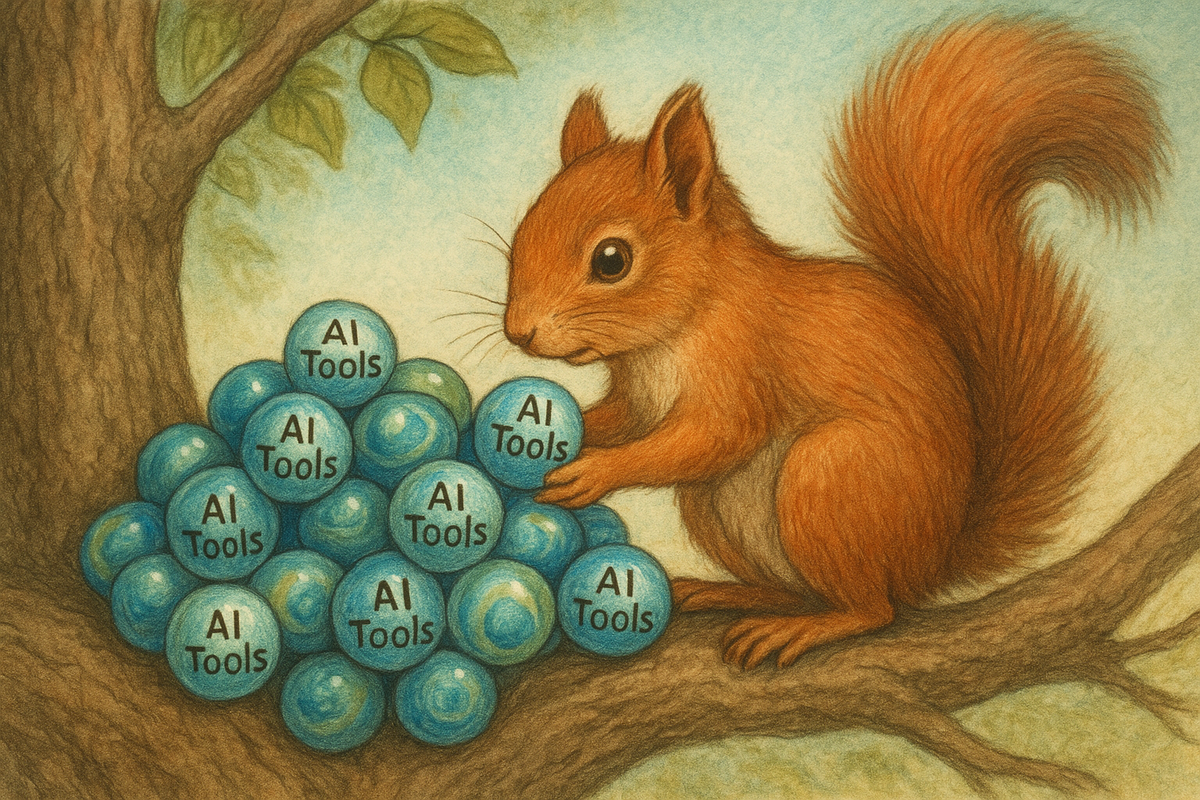
By Elke Porter | WBN AI | November 14, 2025
Subscription to WBN and being a Writer is FREE!
Let's be honest: we've all become tech hoarders. Last Tuesday, I caught myself signing up for my seventeenth AI tool this month because it promised to "revolutionize my workflow." My workflow remains stubbornly un-revolutionized.
The Great Free vs. Paid Divide
Free AI tools are like samples at Costco—they'll keep you alive, but you can't build a meal plan around them. They're perfect for testing the waters: writing that one-off blog post, generating ideas, or convincing your skeptical colleague that "this AI thing" isn't just smoke and mirrors.
Paid tools, however, are where the adults play. They offer consistency, customer support (actual humans!), data privacy, and won't suddenly memory-wipe your entire conversation history mid-sentence. Free ChatGPT forgets you exist every 24 hours. Paid plans remember you're building a business, not just asking for recipe suggestions.
When to Open Your Wallet
Start paying when you find yourself muttering "I use this every single day" or when free limitations actively hurt your business. If you're manually copying AI outputs into three different spreadsheets weekly, that's your wallet's cue.
The FOMO Epidemic
Yes, AI FOMO is real, and it's exhausting. Every week brings another "game-changing" tool that'll supposedly leave you eating dust if you don't subscribe immediately. Here's the truth: 80% of businesses need exactly three AI tools—one for writing, one for analysis, and one for automation.
The rest? Squirrel territory.
But Wait—What If Your Tool Actually Gets Obsolete?
Here's where it gets legitimately tricky. AI isn't like your trusty 2015 laptop that works "just fine." These systems genuinely evolve. They're trained on billions of conversations, documents, and data points, learning patterns and improving responses monthly. That chatbot you loved six months ago? It might now give you advice from the digital Stone Age.
The uncomfortable truth: AI models DO get smarter. GPT-4 isn't just GPT-3 with a fresh coat of paint—it's fundamentally more capable. Newer models understand context better, make fewer mistakes, and handle complex tasks that would've broken their predecessors.
So how do you balance "don't chase shiny objects" with "don't use outdated technology"?
The Strategic Upgrade Framework
Set quarterly check-ins. Mark your calendar to actually test competitors every three months. Spend an hour running your most common tasks through the latest versions of 2-3 leading tools. If the newcomer saves you significant time or dramatically improves quality, that's a signal worth heeding.
Watch for capability gaps. If you find yourself saying "I wish this tool could..." more than twice monthly, research whether newer options fill that gap.
Follow the money. When major players release updates, they announce them loudly. Subscribe to one or two industry newsletters (just one or two!) to catch genuinely significant leaps without drowning in hype.
The Real Bottom Line
Trust AI in business, but trust your metrics more. If a tool doesn't save you at least 5 hours monthly or noticeably improve your output quality, it's just another shiny acorn. But if you're still using last year's model while competitors race ahead with tools that are genuinely 40% more accurate? That's not wisdom—that's stubbornness wearing a cost-saving disguise.
Elke Porter at:
Westcoast German Media
LinkedIn: Elke Porter or
WhatsApp: +1 604 828 8788.
Public Relations. Communications. Education
Let’s bring your story to life — contact me for books, articles, blogs, and bold public relations ideas that make an impact.
TAGS: #AI for Business #Business Tech #AI Tools #Small Business Tips #AI Evolution #Tech Strategy #WBN Ai #Elke Porter


